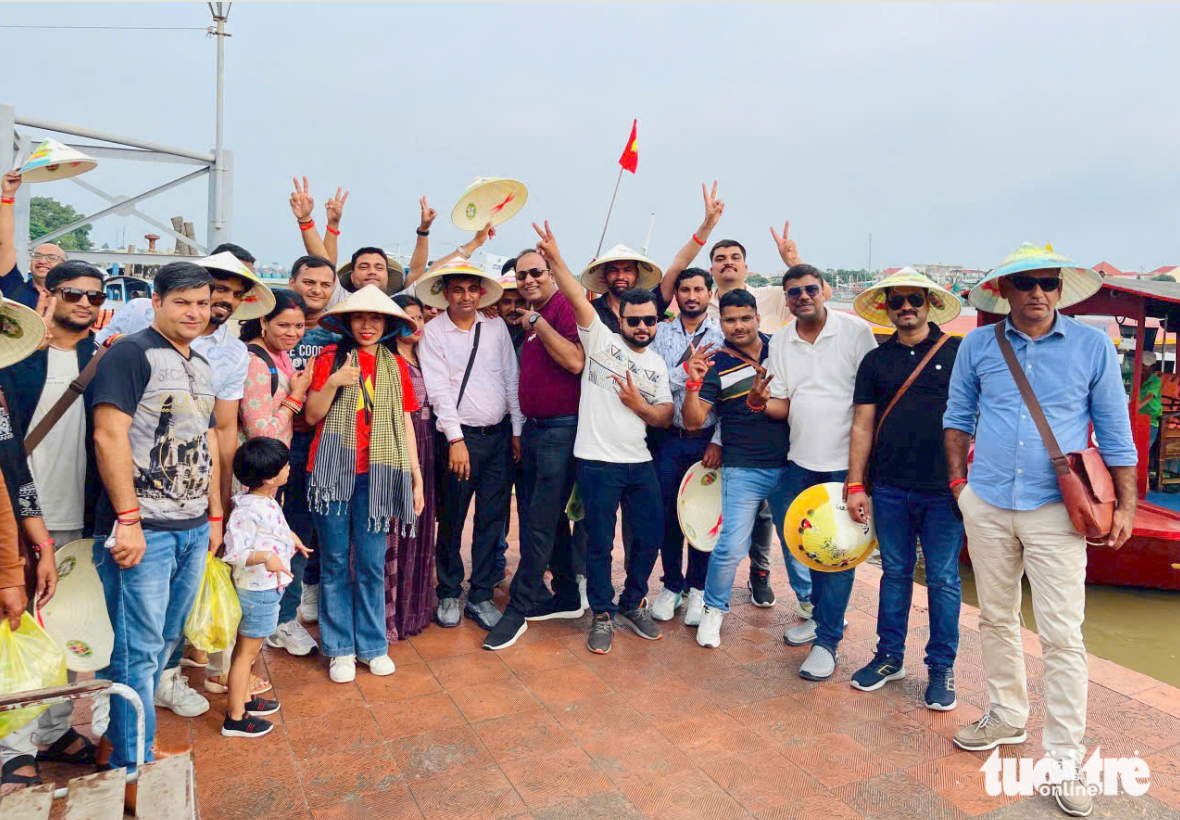At the seminar, entitled “Ngo Quyen – The ancestor of the country”, the researchers affirmed Ngo Quyen’s contributions to the national history as well as the specific history and culture of Co Loa, the capital of Ngo Dynasty (939–965) located in Dong Anh District, Hanoi.
|
The aerial view of Co Loa Citadel relic in Dong Anh district, Hanoi. Photo: Trong Dat
|
According to local, it is necessary to build a temple dedicated to Ngo Quyen in Co Loa to help honour the national hero and sufficiently identify the value of the Co Loa Special National Relic.
This national-scaled seminar came within the activities marking the 1010th anniversary of the capital held by the Hanoi People’s Committee and the association to honour Ngo Quyen and affirm his contributions to the building of the Ngo dynasty in the national history flow.
Many temples dedicated to King Ngo Quyen have been constructed in many provinces nationwide, particularly in Hai Phong City where he defeated the Southern Han troops on Bach Dang River in 938.
According to researcher Doan Truong Son, Chairman of Hai Phong Science and History Association, over 50 monuments worshiping Ngo Quyen in Hai Phong have one thing in common: that they all turn to the West, towards the capital of Co Loa. However, there have been no memorial buildings to pay tribute to the national hero right in former Co Loa capital.
|
Co Loa ancient citadel/ Photo: Hanoitravel.org |
“Hanoi has four temples worshipping Ngo Quyen located in Son Tay town (his hometown) and My Duc District (where he was said to halt while marching),” said Dr. Nguyen Van Son from Hanoi Association of History.
“However, there has been no building to honour the first king of the Ngo Dynasty in Co Loa, the land he chose as the capital and established the independent monarch of the nation, which is really a shortcoming.”
Agreeing with Son’s opinion, Prof. Dr. Nguyen Quang Ngoc, Vice Chairman of Vietnam Association of Historical Sciences expressed his hope that Hanoi would soon build a Ngo Quyen temple to honour his merits.
Favourable moment
The plan to build Ngo Quyen temple to pay homage and commemorate the king who opened the era of long-term independence for the nation has been considered by Hanoi authority for years.
However, according to architect Dao Ngoc Nghiem, since 2002, after the detailed planning of Co Loa relic was finished, the efforts to find traces related to the king in the ancient capital have faced many difficulties.
Up to now, archaeologists have found rare remains associated with Ngo Quyen in ancient Co Loa capital after many excavations.
|
Illustration of Bach Dang battlefield |
“The only related material cultural relic is the Nhat Tao bell, which was discovered by Han Nom scholars at Nhat Tao communal house in North Tu Liem district and the cultural and material vestige of the tenth century in Co Loa is Ma Tre,” said Assoc.Prof. Dr. Tong Trung Tin, director of Viet Nam Archaeology Institute.
“Vietnamese archaeologists hope to find traces of the Ngo dynasty in Co Loa someday. Besides, historical documents and especially the parallel sentence in Co Loa communal house clearly state that Co Loa is the capital during Ngo Quyen’s reign.”
According to scientists, the construction of Ngo Quyen temple at Co Loa has had all necessary conditions; however, they noted that the construction should be ensured of its purpose without affecting the surrounding landscape.
Also at the seminar, Hanoi City People’s Committee Vice Chairman, Ngo Van Quy revealed that the plan of constructing Ngo Quyen Temple has been approved by the Prime Minister, and the city would prepare for its investment and implementation.
Dr. Le Thi Thu Huong from the Hanoi Capital University raised the idea of conducting tourism activities connecting historical relics worshipping Ngo Quyen in the Red River basin. Tourism always plays the role of bringing cultural and natural resources to visitors, an important bridge between the past and the present, she stressed.
Meanwhile, Dr. Dao Ngoc Nghiem, former director of the Hanoi Architecture and Zoning Department, raised the question on the place and the scale the temple should be built while agreeing with the idea of building it in Co Loa.
|
Ngo Quyen was born in Mau Ngo year (898), 5th year of Can Ninh reign, in the local influential family in Duong Lam commune, Son Tay town, Hanoi. The history described that Ngo Quyen was a talent hero, “having wisdom and courage”. After marriage with Duong Dinh Nghe’s daughter whose name is Duong Thi, Duong Tam Kha’s younger sister, Ngo Quyen became a general and son-in-law of Duong Dinh Nghe, trusted and assigned by the governor to manage Ai Chau, basic land of Duong family in the year 932. The victory of the battle against the invading forces of the Southern Han state of China on Bạch Đằng River, led by Ngo Quyen, was of great historical significance. It put an end to centuries of Chinese imperial domination in Vietnam and opened a new era of the nation’s independence. After the victory, Ngo Quyen self-proclaimed king and settled the capital in Co Loa, the former capital of Au Lac State (257 BC-179 BC) and reigned from 939-944. |


.jpg)



